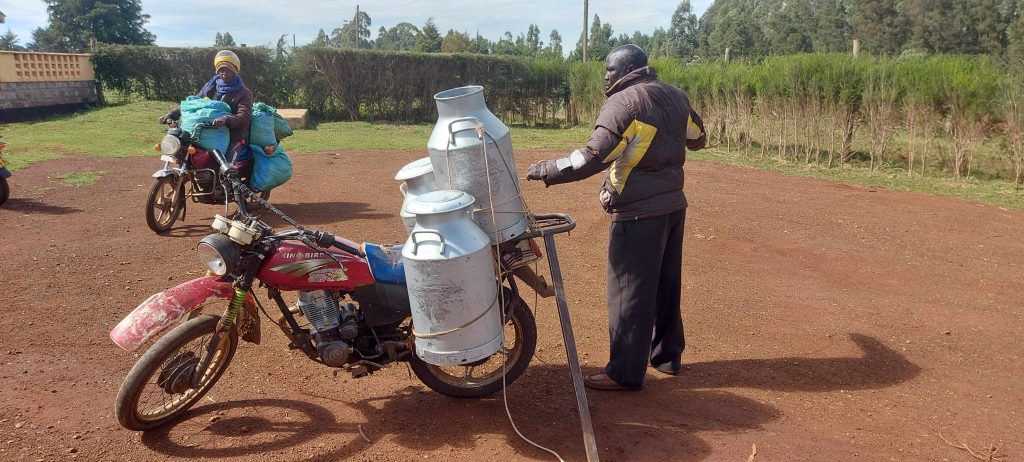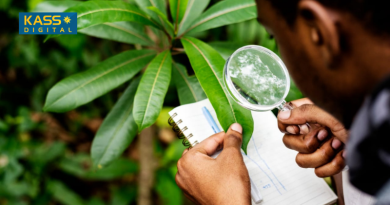Transforming Kenya’s Informal Milk Sector
Carolyne Tomno

A bold new initiative is reshaping Kenya’s informal dairy sector by turning milk vendors into champions of food safety, community health, and inclusive economic growth.
More Milk for Lives and Livelihoods 2 (MoreMilk 2)—a collaborative effort led by the Kenya Dairy Board (KDB) and the International Livestock Research Institute (ILRI)—is expanding across Uasin Gishu, Nakuru, and Nyandarua counties with a mission to make safe, nutritious milk more accessible while empowering small-scale vendors.
“We’re not launching a project—we’re co-creating a solution,” said Dr. Silvia Alonso, Principal Scientist at ILRI. “MoreMilk 2 is not just about milk. It’s about dignity, equity, and building a system where everyone—from vendor to consumer—wins.”
Partnering for Change
Unlike past approaches that targeted informal vendors with crackdowns, MoreMilk 2 sees them as essential partners in creating safer and more resilient milk supply chains.
With over 70% of Kenya’s milk sold through informal channels, supporting these vendors is key to improving quality, boosting livelihoods, and building consumer trust.
Through training, coaching, and practical incentives, vendors will learn how to improve milk safety while growing their businesses and incomes.
“We must stop criminalizing the informal sector. Instead, we should work with it to improve standards and sustainability,” said Maritim Kimutai, Director of Regulatory Services at the Kenya Dairy board (KDB).
Technical Meetings
Between March 25 and April 2, 2025, the MoreMilk 2 team held strategic technical meetings with county leaders, laying the foundation for a community-driven rollout.
The team met with County Executive Committee Members (CECMs), agriculture and livestock officers, public health officials, and cooperatives during what they called a “listening tour.”
These conversations helped tailor the program to reflect each county’s unique challenges and opportunities.
“With MoreMilk 1 in Eldoret, we saw vendors thrive and more milk reaching our children. MoreMilk 2 expands that success, from farm to vendor,” said Abraham Kiptanui, Uasin Gishu County Director of Livestock Production.
Counties like Nakuru and Nyandarua are fully aligned with MoreMilk 2’s inclusive model.
“Nakuru does not condemn informal vendors. We organize and train them. That’s why MoreMilk 2 fits perfectly with our approach,” said Virginia Ngunjiri, Nakuru County Director of Livestock Production.
“Nyandarua produces milk but consumes very little. Strengthening our local markets will get more milk into our homes—and more income into farmers’ pockets,” said Francis Miring’u, CECM for Health Services.
What’s Next for MoreMilk 2
With strong county support, the program now moves into full implementation. Upcoming activities include:
-Launching a vendor training and certification program
-Creating safe and inclusive informal milk market hubs
-Engaging more counties and grassroots partners
-Strengthening local policy and investment frameworks
MoreMilk 2 builds on the success of the MoreMilk 1 pilot in Eldoret, where trained vendors reported improved milk quality, stronger customer relationships, and business growth.
“This is about turning informal vendors into drivers of public health, business success, and local development,” Dr. Alonso emphasized.
More Milk, Better Lives
By working with informal vendors instead of against them, MoreMilk 2 aims to bring more safe, affordable milk to households—while unlocking new opportunities across Kenya’s rural and urban communities.
As county governments lead the charge, MoreMilk 2 is poised to deliver not just more milk—but better milk, stronger communities, and brighter futures.




